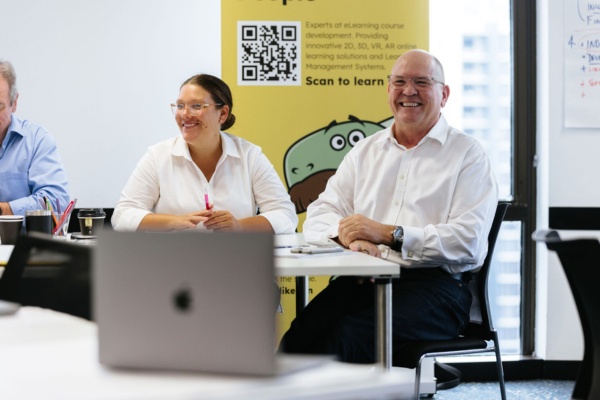Ensuring a healthy and safe workplace has always been an important part of a manager’s work. On 1st April 2023 the Queensland Government introduced the first legally enforceable code of practice aimed at addressing psychosocial hazards in the workplace. The code now defines an employer’s obligations more fully by giving structure to issues of psychosocial health and safety in the same way it had defined physical safety in the workplace. While the idea of managing psychosocial risk at work isn’t new, the recent changes require a much sharper focus from organisations who want to avoid litigation, attract and retain talent and create a constructive culture amongst their workforce.
What are psychosocial hazards?
Psychosocial hazards are anything that can cause psychological harm (e.g. harm someone’s mental health) in the workplace. They stem from:
- The way the tasks or job are designed, organised, managed and supervised
- Tasks or jobs where there are inherent psychosocial hazards and risks
- The equipment, working environment or requirements to undertake duties in physically hazardous environments
- Social factors at work, workplace relationships and social interactions
Who does the code of practice apply to?
The Code applies to any persons conducting a business or undertaking (PCBU) in Queensland. Organisations and their managers already have a primary duty of care to provide and maintain a work environment without risks under the Workplace Health & Safety (WHS) Act.
What are some examples of psychosocial hazards?
The below table includes some examples of psychosocial hazards identified in the code and examples of risk factors that employers should consider. This list is not exhaustive and there are many other psychosocial hazards that an employer will need to review. There is also a greater risk of work-related stress when psychosocial hazards combine and act together, so employers should also be careful not to consider hazards in isolation.
| Hazard | Examples |
|---|---|
| Work demands | Tasks or jobs that involve:
|
| Low levels of control | Tasks or jobs where:
|
| Working in isolation | Tasks or job where there are:
|
| Poor support | Tasks or jobs where workers have insufficient or inappropriate:
|
| Workplace culture | Workplaces where there is:
|
What do organisations need to do?
To meet your obligations as a PCBU (the organisation) in managing psychosocial hazards in the workplace, you must eliminate or minimise the risk as far as is reasonably practicable. You should use a four-step risk process to meet your health and safety obligations under the Code and regulations (similar to the existing obligations). These four steps include:
| Step | Examples |
|---|---|
| Identify psychosocial hazards | Review internal data such as complaint reports, absenteeism and turnover rates
Gather feedback through conversations, observations, group discussions, anonymous forms and surveys Audit existing policies and processes related to mental health including policies and procedures, management practices, training programs and job descriptions |
| Assess the risks | Review organisational structure (e.g. lines of reporting, supervisory responsibilities)
Assess specific job requirements within the organisation Assess the design and use of the physical workplace (e.g. break out areas) Observe how work tasks are completed |
| Control the risks | Provide leadership and management training
Update and communicate policies and processes related to mental health |
| Monitor and review the effectiveness of the controls and adapt or improve the controls where necessary | Create a schedule for maintaining, monitoring and reviewing controls to ensure they are effective
Undertake regular scheduled discussions at management and WHS meetings Conduct employee surveys |
What are some of the consequences of psychosocial hazards for an organisation?
When psychosocial hazards are not effectively managed, they can negatively impact on an organisation in many ways. Some of the consequences to an organisation include:
- Poor overall business performance
- Increased absenteeism and presenteeism (workers turning up for work when sick and unable to function effectively)
- Increased conflict and relationship-related friction
- Mistakes, work-related accidents and higher injury rates
- Reputational risk
- Poor employee retention and associated costs
- Litigation cases or claims (there have been recent prosecutions of companies and their directors around workplace bullying and sexual harassment at work)
Conclusion
With improved clarity around obligations and expectations for psychosocial safety, now is the time for Queensland organisations to address these specific risks and become compliant. Addressing psychosocial hazards in the workplace requires an investment of time, energy and resources, however your return on investment will be well worth the effort. Increased employee health and wellbeing will impact everything from retention to innovation. The good news is, if you have a constructive culture supported by productive systems and processes you will almost certainly be doing what you need to do to cover your obligations under the code.
Find out more
If you are interested in learning more about where your organisation stands in relation to psychosocial hazards and the Qld code of conduct, please don’t hesitate to reach out to our experts, Phillip Bartlett or Andrew Moore. Using methodologies based on Systems Leadership, we have worked with a range of organisations and industries to develop and implement psychosocial risk strategies and leadership and cultural training in the workplace.





